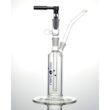Yes, the consignor may be partially liable if the damage occurs due to improper packaging or labeling before handing over the goods to the carrier. In case where a consigner and shipper is not the same, they come together to sign the BOL, specifying the shipment terms and clauses. However, they are also permitted to rely only on what they are told by a trusted consignor – the technical term for a sender. “What is know is that it was acquired by a legal predecessor of the consignor in the 1960s and went to the current owner through three successive inheritances.” In a globalized economy, the flow of goods crosses not only national borders, but also customs borders. Consignment is the act of consigning, which is to send something to a person or a place to be sold.
Depending on the type of Incoterms agreed between the consignor and the buyer, the cost of insurance is covered by either party. If the Incoterms mentioned in the agreement is CIF – Cost, Insurance, and Freight , then the consignor covers the insurance of goods. In the case of CFR Incoterms, the consignee or the end-customer arranges the insurance for the goods during transit. Along with these documents, payment invoice, packing list, any certificates, and other documents for clearing custom duties and taxes are sent to the consignee. This connection is also easy to make since consignee ends in two “E’s” and seller also has two “E’s” in it. Consignment can also refer to a contract in which someone else is entrusted to store goods, the person who entrusts is the consignor and the person who accepts the entrustment is the consignee.
- Depending on the type of Incoterms agreed between the consignor and the buyer, the cost of insurance is covered by either party.
- The consignee has the right to make a claim under the contract of carriage against the carrier if the goods are not delivered or have been damaged during transit.
- In the case of an auction, the person who wants to sell the goods/ property through auction is the consignor, and the auction house is the consignee.
- These two roles are crucial in the process of transporting goods, determining responsibilities and ownership throughout the shipment process.
What is a consignee?
Furthermore, the consignor is typically responsible for setting the selling price of the goods and may also have a say in how the goods are marketed and displayed. In some cases, the consignor may retain ownership of the goods until they are sold, meaning they bear the financial risk if the goods do not sell. This arrangement can be advantageous for the consignor, as it allows them to expand their market reach without the need for physical retail space.
Moving further, when it comes to the differences between a consignor and a shipper, they both signify the same position or job role. Normally, the consignor and shipper are the same individual or entity unless the former has a third party involved in the process of shipping the items. ABC Ltd. manufactures spices and it wants to sell spices throughout the world. To sell across the world, ABC Ltd. entered into various consignment agreements with dealers worldwide and made all arrangements to transfer some of the packets for sale and get the order. The consignor-consignee concept is typically used in the case of an auction.
- Freight shipments frequently change hands, and cargo arriving from overseas could pass between numerous third-party operators before reaching its final destination.
- The consignee is the final recipient of the shipment, usually a customer or client of the consignor.
- They are responsible for packaging, labeling, and arranging transportation for the goods.
Contracts can be enjoyable.
The consignor has to secure necessary permissions and certificates for clearing goods at the destination. A certificate of origin may be required, which is issued by the Chamber of Commerce of the exporter’s country. If the consignor is shipping food products, a health certificate issued by the health department might be needed before beginning the shipping process. The timing and method of payment can vary, and are typically outlined in the consignment agreement. Once payment’s been made – from the third-party buyer to the auction house – the money is turned over to the consignor, minus a fee for the consignee for hosting the items and facilitating the sale. A consignor is the individual or business responsible for sending goods to a designated receiver or consignee, typically through a logistics provider or carrier.
The consignor retains the rights and title to the goods until they are transferred to the buyer. The consignor is entitled to make a claim against the carrier based on the terms and conditions in the contract of carriage. The contract of carriage defines the rights, liabilities, and duties of parties involved in the contract. In some instances, the contract of carriage and bill of lading are the same. In the event of loss or damage of goods during transit, the consignor has the right to sue the carrier under the contract of carriage. The role of the consignor is also important in the context of supply chain management.
A consignor is a person or a company that is responsible for initiating and organising a shipment. A consignor could be a seller or an exporter (who ships goods from one country to the other). Buske Logistics is a Top 40 3PL with over 35 warehouses across North America, specializing in warehousing, transportation, and value-added services.
Rights and Liabilities of a Consignee
The consignee pays a specific amount to the consignor and the latter is responsible for taking care of the shipment charges only. To take up this freight transaction, a contract is prepared for the parties involved. This contract is the consignment, signed by a consignee, consignor, and carrier. A consignor is the sole authority that takes care of the products and items until they reach the consignee, who is the recipient of the consignments. However, until the goods are sold to the end users or consumers, their ownership rights remain with the consigner, who is the shipper as well in most cases.
Would you like us to send you a FREE new word definition delivered to your inbox daily?
The common types of products that are sold through consignment include clothing, shoes, antiques, and handicrafts. In such cases, the rights and liabilities will be transferred to the freight forwarder. Every consignment involves a third-party operator that sells, transports or holds goods on behalf of another party that retains full ownership of the goods until they are sold. The consignor must also coordinate with the consignee to ensure that the goods are received and processed correctly. The role of consignee and consignor must be clarified to establish who is responsible for what. Without an established consignee, the carrier could be considered responsible for ownership of goods, including the handling customs duties, or the cargo could be abandoned at the border.
Discover Free Digital Marketing Tools to Maximise Your Efforts
The consignor will need the duplicate consignment note that they received when they handed over the goods to the carrier to file the claim. They also need to check that the reason for filing is not included in the “Carrier Exclusions to Responsibility” as outlined in the Carmack Agreement for interstate commerce in the United States. The shippers need to consult the Carriage of Goods by Sea Act (COGSA) for contracts of carriage by sea between the United States and foreign ports.
The consignee acts as a sort of middleman, which is the individual that buys or retains the goods and passes them along to a third party or the final buyer. The features described in the table above highlight the difference between the roles and responsibilities of consignors and consignees in a consignment arrangement. The consignor plays a vital role in the logistics process by initiating the shipment of goods and ensuring everything is in order before transport begins.
Duties of the Consignor
The consignee has the right to make a claim under the contract of carriage against the carrier if the goods are not delivered or have been damaged during transit. The consignee’s name is specified in the bill of lading to ensure that the goods being shipped are handed over to the correct party. Whether consignor meaning the consigner is the final buyer or not, the ownership and liability of the goods are transferred to them once the goods are received by them.
Understanding the distinction between these roles is crucial in managing responsibilities, ownership, and the legal obligations related to shipping contracts. In this blog, we will further explain the concept of consignment and explore the differences between consignor vs consignee. We will also see how ShiprocketX provides solutions for your consignment business and simplifies the process.







